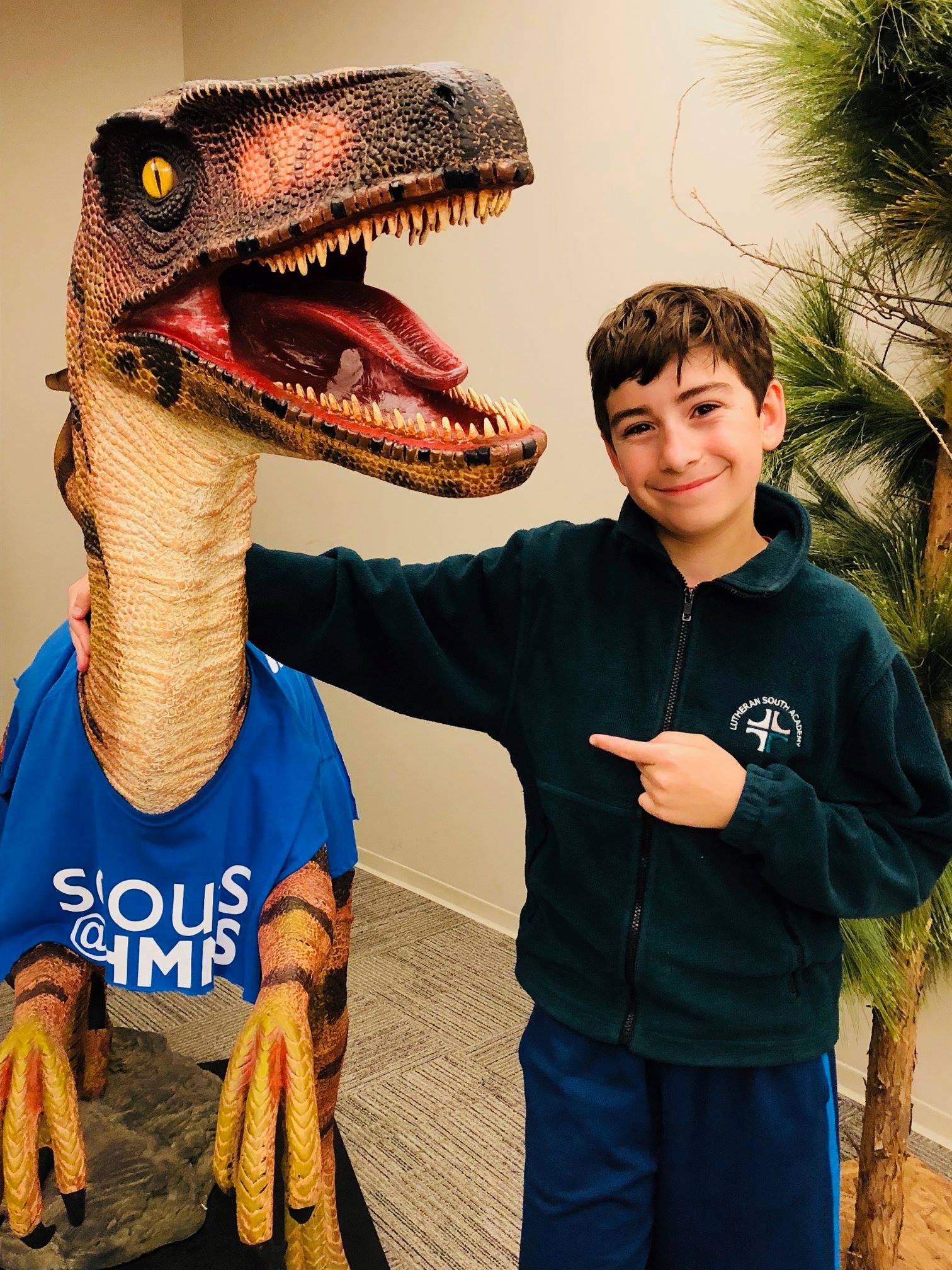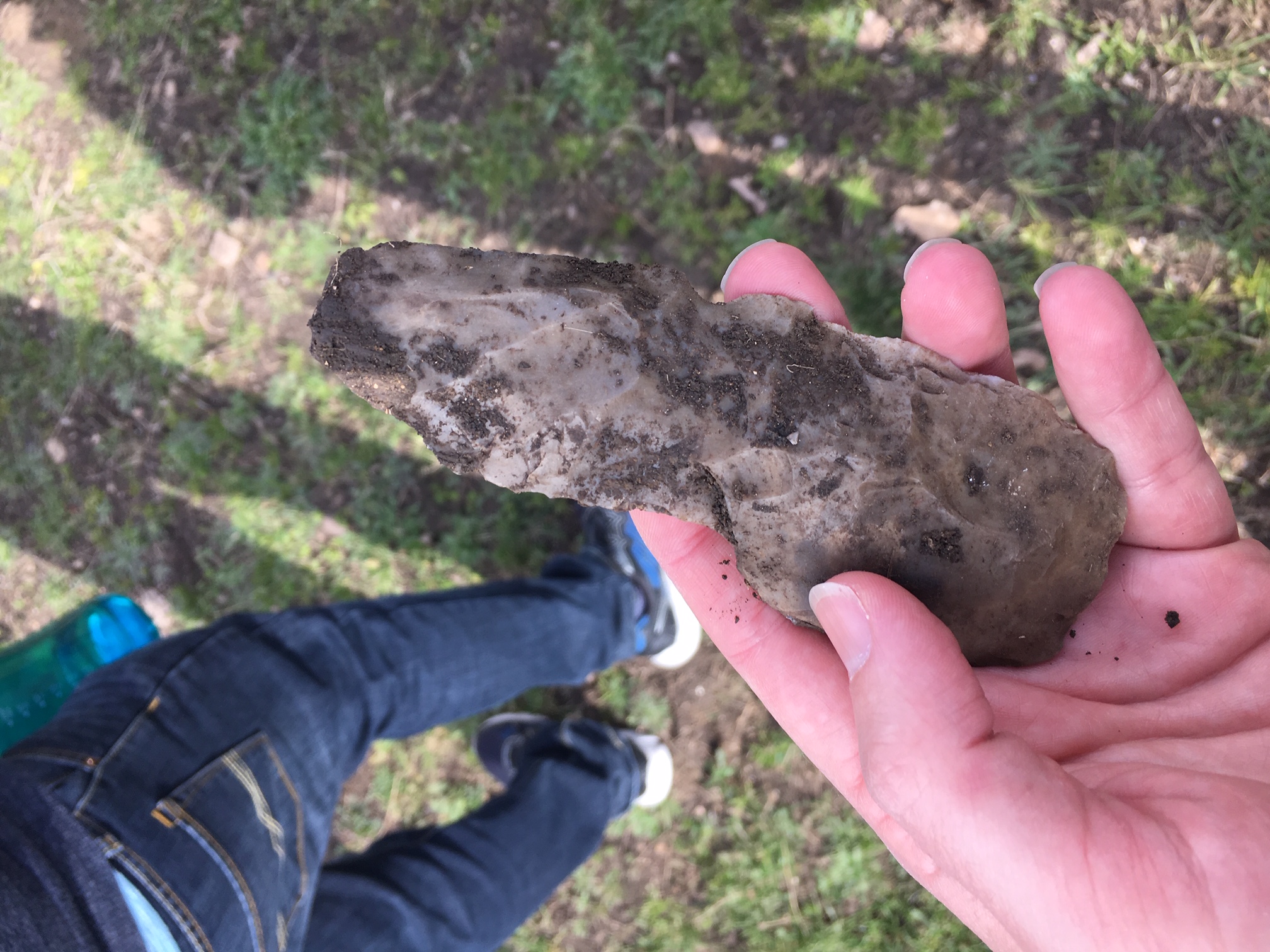by Sabrina Dahlgren
Everyone invariably reaches an age when an adult will admonish them to stop playing on the ground and getting their clothes dirty. Archaeologists are among those people who decide that playing in the dirt is too much fun to ever give up, and that they are going to make a living (though maybe not a very lucrative one) out of it.
Archaeology is a combination of curiosity, science, history, and humanities. Precise methods are utilized to uncover artifacts that provide information about past people, societies, or cultures. That information must then be analyzed and put into context to provide a picture of the past that can inform us about how we have changed over time as individuals and as groups.
The principles and methods of archaeology are simple enough to understand, though the work itself can be very physical and demanding. One opportunity to experience such work is to participate in a dig in your area. The Houston Museum of Natural Science is fortunate to have teamed up with the George Ranch Historical Park and the Fort Bend Archaeological Society to host supervised digs at the George Ranch.

Our one-meter-square plot was carefully delineated and I and a few of the dads removed the upper layer of sod.
Join us at our next exciting dig Saturday, March 5! It’s easy to get signed up. Just register online! Registration is $45 and $30 for members. Children must be accompanied by an adult chaperone.
THE HISTORY
The George Ranch Historical Park showcases more than 190 years of modern Texas history spanning four generations.
Nancy and Henry Jones claimed their league of land (4,428 acres) in 1824 as part of Stephen F. Austin’s “Old Three Hundred” colonization of Mexican territory along the Brazos River. Mary Moore, known as “Polly”, third of the Jones’s 12 children, inherited most of the family’s assets and along with her husband, William M. Ryon, greatly expanded their holdings. By the 1880’s, the family’s combined holdings, including land owned (by Polly, her brother and her son-in-law) and land leased, was 67,668 acres (about 12 percent of the total area of Fort Bend County). Polly’s granddaughter Mary Elizabeth, “Mamie,” the wife of Alfred P. George, inherited the property when Polly died in 1896. The family’s monetary fortunes expanded further when oil was discovered in the 1920’s, though personal tragedy marked by the deaths of the Georges’ infant son and adult niece in the coming years meant no heir would inherit the family’s estate. In order to preserve their legacy, Mamie and Alfred established the George Foundation to benefit Fort Bend County’s people.
Why is all of this history important, you ask? Because the historical ranch site has been continually occupied by settlers and their descendants and trustees over nearly two centuries. More than 23,000 acres are still a working ranch, not to mention the native peoples and fauna that have ranged over the site for thousands of years.
And what does this mean? Stuff to find, if you dig deep enough and in the right spot! Keep on reading to learn what it’s like to go out on a dig.
DIG DAY: The Story of Our Last Adventure
It started overcast and early. The drive from Houston to the George Ranch on a Saturday morning is a relatively quick, low-traffic affair. You should know that I’ve lived in Texas for a few decades of my life, so my definition of a quick drive is anything under an hour. This drive clocked in at around 35 minutes.
The main entrance to the ranch led to a large parking lot stretching to the right, various structures seen dotting the surrounding space. Our interest lay in a small patch of soil in the northeast corner. My scouts and their parents met me there, where we were instructed by Robert Crosser and Dottie Allen of the Fort Bend Archaeological Society on where to dig. Our general location was part of the Jones’s original 1830s log cabin site, which encompasses part of the terrain of the 1850s prairie home that burned down in 1888, possibly housed a Civil War cavalry unit that camped in the area overnight, and held the 1930s bachelor cowboys houses. The potential for a big discovery was there, if we happened to be digging in the right spot.
The Fort Bend Archaeological Society provided tools: shovels, trowels, buckets, and a box screen, as well as resealable plastic bags, permanent markers, record sheets and pencils. We brought other personal things like gloves, sunscreen, bug spray, wet wipes, water and snacks.
My most succinct and most repeated lesson to the scouts was that real archaeology is nothing like Indiana Jones. You don’t break through layers in search for specific shiny objects; you go through each layer meticulously and find everything you can. You don’t just grab that one thing that catches your eye; artifacts should be photographed as they appear, with a scale, and in their original positions before being removed. It should be noted that in our case we were searching by layer rather than by position, as the square meter in which we were digging was considered to be specific enough. You’re unlikely to be inundated with artifacts at all times; a lot (if not most) of archaeology is dirt. Get used to the idea that this in the material you will work will in the greatest abundance. Dirt is guaranteed, artifacts are not.
Our one-meter-square plot was carefully delineated and I and a few of the dads removed the upper layer of sod, setting it aside to cover the dig area once we had finished for the day. The clumps of sod actually yielded our first find: a rusted horseshoe tangled among the grass roots.
We dug down into four inches of strata using trowels, which means we processed to a six-inch depth across the entire plot before moving on to a lower level. Using line levels, plumb bobs and measuring tape, we assured that we dug evenly.
The reason for digging down by strata is that you can get a general idea of time. Objects found closer to the surface are generally newer than those located further down. The soil was passed through a rocking sifting screen. The buckets of soil removed from each stratum had to be emptied through the screen before digging on a new stratum could commence.
The first (zero to four inches) and second (four to eight inches) strata yielded a horseshoe, a nail, a ceramic fragment, and a small, green, decorative plastic star.
In the third and final stratum (eight to 12 inches), we hit the jackpot! Barbed wire segments, pieces of metal mesh, nails, metal stakes, a metal file, unglazed pottery shards, fragments of ceramic, broken glass, wood fragments, small bones, bone fragments and animal teeth, oyster shell pieces, a plastic button, and a shell casing.
Everything was bagged according to which layer it came from and was taken by the Fort Bend Archaeological Society to be processed, identified and added to the data from the George Ranch. The scouts cleaned up the site, picked up any trash they might have brought with the, and washed up in the park’s facilities. Field work at times means that you’ll end your day with nothing but dirt-encrusted hands and the hope that tomorrow might reveal more. We were lucky that our final stratum of the day yielded so many interesting things, so I could send the Scouts off with a feeling of accomplishment.
Archaeology is fun! It forces you to go outside and encourages you to deliberately play in the dirt. It fosters patience and attention to detail. It encourages appreciation of small objects and moments and allows you to put together a picture of events that transpired in the past. It is science and humanities and storytelling all rolled into one. And playing (working) in the dirt at the George Ranch is a great way to spend a Saturday morning. Now this is my kind of science!
Editor’s Note: Sabrina Dahlgren is a Curatorial Assistant at the Houston Museum of Natural Science, providing help in tracking and maintaining existing and incoming collections to be installed as exhibits or stored for future exposition.











